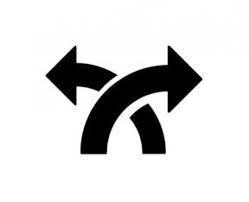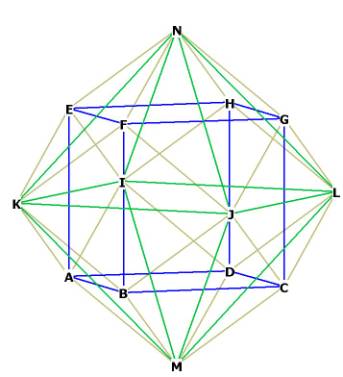|
(2017
midterm assignment) Model Student Midterm answers 2017 (Index) Essay 1: Compare, contrast, and evaluate Narratives of the Future |
 |
Kyle W. Abshire
10/11/2017
Narratives of the Future: Three Forms of Story Telling
The Future is complex. None of us knows what, when, where, or why the future
will take place. The answer to these questions has led to the speculation and
excitement of story tellers throughout time. There are three definitive
narratives commonly used to tell future-bearing stories. They are known as
apocalypse, evolution, and alternative narratives. Although these three
narratives have tendencies to cross over at times, they each have distinct
differences. The apocalypse narrative tends to run from point A to B; a
beginning and an end. Evolution narratives retain a more cyclical pattern, which
leaves more room for change and often rebirth. Alternative narratives focus on
the possibility of multiple situations, leading to a much more abstract story.
Apocalypse stories are often set up with a beginning and rush along to their
end. The beginning of the story usually revolves around a creation of some type
and ends with a destruction. The Bible uses this type of narrative to
convey its story. The linear fashion in which the Bible runs is a perfect
example of an apocalypse narrative. We begin the Bible with Genesis and end
with Revelation, while everything in between carries us from one end to the
other. “I am Alpha and Omega, the first and the last” (Revelation 1:11). The
bible plainly states that God is the Creator and the destructor of time. Leaving
little room for interpretations, that might lead people to believe, that time
will conclude after the events in the Bible. Many ancient texts use this form of
narrative because like Marion Johnson stated in 2016, “This narrative is very
commonly employed, as it is usually the easiest to follow.” The simplicity of
the narrative lends the story authority. The beginning and the end, Good Versus
evil, Open and close.
Genesis is used as the Creation or
beginning of the Bible’s time line. Genesis depicts the creation of earth and
time. God is imagined as the sole provider for this astronomical achievement and
viewed as a caring father that watches
over his creation. “1 In the beginning God created the heaven and the earth. 2
And the earth was without form, and void; and darkness was upon the face of the
deep. And the Spirit of God moved upon the face of the waters” (Genesis 1:1-2).
The powerful image, depicts God as the only being in existence, as he watches
over his handiwork. The power laid upon God in the Bible gives him the ability
to be all knowing. God is the only thing that will outlive this world and
therefore the future is in his hands. Readers of this type of Narrative are
likely to see only God as authority. If God is as all powerful and all knowing,
as the Bible states that he is. It is difficult for us to accept the authority
of other men over our lives.
Evolution narratives are considerably much more complicated. The movement from
beginning to end is not as direct as that of an apocalypse narrative. Many
time’s evolution stories rely on dramatic or subtle changes in the story itself,
to either advance the story along or bring us back to a similar idea or
situation from the beginning. Parable of
the Sower begins with a young woman whose father is a preacher. The young
woman has decided that she does not believe in the same god as her father and
sets out to create her own community centered around her own understanding of
what god is. God is Power— / Infinite, / Irresistible, / Inexorable, /
Indifferent. / And yet, God is Pliable— / Trickster, / Teacher, / Chaos, / Clay.
/ God exists to be shaped. God is Change. ( Parable 3. Verse2.1-12) Lauren’s
verse, shows us how she views God. She has disagreed with the apocalypse
narrative that the Bible teaches and believes that change is a fundamental piece
to God. The evolutionary pattern here is expressed in her wanting to
escape a religious ideology. However, through her soul searching that led her to
denounce her father’s god; she has found her own.
Bears Discover Fire
is an evolution narrative due to its reliance on physical evolution. The title
implies that bears have crossed an evolutionary threshold just as man once did.
“A climate ecologist said that the warm winters (there was no snow last winter
in Nashville, and only one flurry in Louisville) had changed the bears’
hibernation cycle, and now they were able to remember things from year to year.
Bears may have discovered fire centuries ago, he said, but forgot it” (Bears
21). The implication that bears would be able, to create and control fire gives
us a sense that we won’t always be the dominant species on Earth. We are pushed
to contemplate what might happen if evolution caused us to drop in the food
chain. How would we survive if another species became as smart or smarter than
us? Stone Lives deals with evolution
similarly to Bears discover fire.
However Stone, uses technology to advance evolution. “They emit charged beams of
energetic electrons at relativistic speeds. If the scythe of the beam touches
you, the kinetic energy imparted blows you apart like a squashed sausage” (Stone
180). Stone Lives takes place in a
futuristic world where technology has advanced in a way, that empowers those who
can control it. Those who have no access to technology are treated as inferior.
The evolution cycle of man has been interrupted and morphed by the advancement
of technology. The cyclical nature of
the evolution narrative winds us down a pathway that doesn’t have a clear
direction. The alternative narrative tends to have an abstract form of
storytelling, that can jump around and change direction as the story moves
forward.
Alternative narratives give us an entirely different style of storytelling.
Alternative narratives are able, to take us back in forth in time and affect our
present simultaneously. Mozart in Mirror
Shades is a perfect example of how an alternative timeline is used. The main
character Rice explains, how his actions in the past won’t affect his present.
“It’s this way. History is like a tree, okay? When you go back and mess with the
past, another branch of history splits off from the main trunk. Well this world
is just one of those branches” (Mozart 227). Alternative narratives often use
time travel, to solve an issue of the present.
Mozart In Mirror Shades depicts
people traveling backwards in time to extract valuable resources. However their
interference with the past is only affecting a new version of the future; Not
their own present. Instead of traveling into the past, to fix the present,
The Time machine Travels into the
future. The time traveler goes forward, hundreds of thousands of years into the
future, to warn us about what is to come. ”for the question had been discussed
among us long before the Time Machine was made—thought but cheerlessly of the
Advancement of Mankind, and saw in the growing pile [accumulated building] of
civilization only a foolish heaping that must inevitably fall back upon and
destroy its makers in the end.” (Time Machine E2). The time traveler comes back
to the present with a word of warning. The future is not great for mankind. The
idea that our current trajectory could eventually lead, to the fall of humanity
causes alarm in us. We are now inclined to find a way of preventing this dire
outlook on our future.
All three narratives of the future have different style of telling us what may
come. The apocalypse narrative uses a straight line to depict itself. The story
must begin with a creation like Genesis’
creation of the Earth and end like
Revelation’s destruction of it. The creation in
Genesis only serves to establish a
placed to be destroyed in Revelation.
Evolution narratives don’t have an apparent beginning and end. They more often
exhibit a change so that the story itself can continue in a different way.
The Parable of the Sower and
Bears Discover Fire don’t end with
destruction. Their stories allow for a change in the way life is lived so that a
new way of life can come forth. The
Parable begins in a small walled in city surrounded by danger. Lauren then
introduces a philosophy into the world which allows her and a small group of
people to be able, to settle together in peace. Alternative narratives
often rely on time travel to solve a present issue.
Mozart In Mirror Shades travels to
the past to obtain more resources for the present. Along the way the past is
destroyed because of the influence from the future. However the time travelers
are not worried because the destroyed past will not affect their present.
The Time Machine uses time travel to
warn us that we might not leading our society to live in the most prosperous
fashion. It raises warning that our constant goal of making life easier might
eventually harm us. The three future narratives have completely different styles
of depicting the future. Which lead us to have different outlooks on what may
happen.
 |
 |
 |
